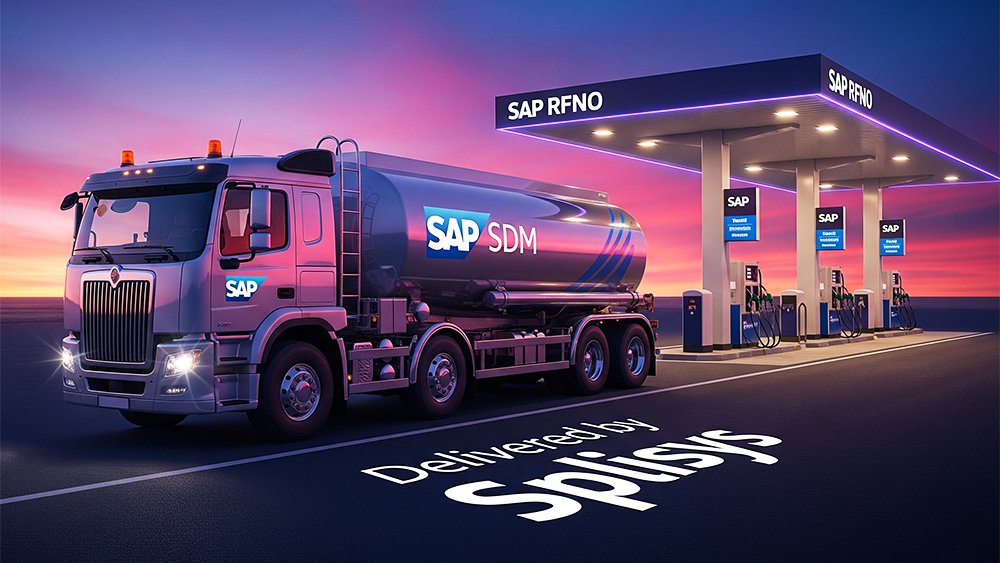The fuel retail problem in 2025—speed beats size
Fuel demand remains steady or is declining slightly across many markets, while profit margins continue to fluctuate and operating costs continue to rise. Convenience store executives report that their earnings are directly affected by changes in fuel margins and reduced sales volumes. As a result, accurate inventory management, fast restocking, and consistent pricing have become critical business priorities.
At the same time, AI is compressing cycle times across the energy sector, from drilling decisions to facility monitoring. Executives at CERAWeek 2025 shared concrete efficiency wins. Devon Energy reported double-digit improvements from ML monitoring, and Chevron highlighted automation for faster completion, evidence that data-driven operations now set the benchmark across the value chain. Downstream retailers don’t have to drill wells, but they do have wells of data—and they should use them.
Refer – CERAWeek 2025
What “S/4HANA Cloud for Downstream Retail” includes
Think of S/4HANA Cloud (often Private Edition for industry depth) as the digital spine where oil retail runs end-to-end—from depot to nozzle to ledger.
1. Retail Fuel Network Operations (RFNO) – the forecourt brain
RFNO ingests POS volumes, manages wet-stock, handles clearing-house and fleet-card settlement, and reconciles station sales with financials. It’s the operational core for COCO/CODO/DOCO networks.
Why it matters:
- Hourly variance alerts (tanks vs dispensers) stop silent losses
- Automated dealer settlement and card clearing reduce DSO.
- Integrated shop/car-wash postings keep P&L honest.
Refer – SAP Help Portal RFNO
2. Secondary Distribution Management (SDM / S4SCSD) – the wheels
SDM (based on S4SCSD) encompasses the purchase, storage, transport, and sale of fuels and LPG, while also providing a planning cockpit for tour scheduling, tele sales, and delivery fulfillment—purpose-built for petroleum logistics.
Refer to – SAP Help Portal for S4SCSD
Why it matters:
- Dynamic tour planning reduces miles per drop, resulting in fewer truck rolls and stockouts.
- One truth for orders, inventory, loads, and proof of delivery.
3. Transportation Management (TM) – plan like a pro
Where networks need more optimization, SAP TM refines route/tour planning with precise drive/load/unload/couple times and constraints directly in the planning cockpit.
Refer – Transportation Planning
4. Hardware & forecourt systems – where data is born
S/4HANA Cloud landscapes integrate with forecourt controllers, POS, and ATGs (e.g., Gilbarco Veeder-Root TLS series). ATGs provide real-time tank levels, leak detection, and Business Inventory Reconciliation (BIR), the raw signals RFNO uses to maintain accurate records.
Note: A forecourt controller is a device or software system that acts as the central control point for a gas station. It manages and coordinates all the equipment on site, including fuel pumps, tank monitoring systems, price displays, and payment processing systems.
Refer – gilbarco.com veeder.com
5. Business AI – put the data to work
SAP emphasizes Business AI for oil, gas, and energy—bringing embedded ML to demand sensing, anomaly detection, and intelligent asset care. In retail fuel, that means shrink prediction, dynamic price guidance, and truck pre-dispatch when a storm hits.
Refer – SAP Business AI for Oil, Gas, and Energy
Use cases that move the P&L
A. Wet-stock variance detection & loss prevention
- Signal: Automatic tank gauging (ATG), fuel dispenser readings, and point-of-sale transaction data (ATG + dispenser + POS data)
- Action: RFNO System performs Meter Vs POS sales quantity reconciliation and Three-way Matching (Meter Vs Sales Vs Tank volume) to flag unusual inventory shrinkage; site and territory managers adjust delivery schedules or temporarily suspend sales as required through SDM/TM
- Impact: Reduce inventory variance through early detection of equipment leaks, theft, and calibration issues, delivering meaningful profit improvement in low-margin fuel operations
B. Continuous station replenishment (CSR) with tour optimization
- Signal: Real-time fuel level readings compared against demand forecasts (Hourly dips vs forecast)
- Action: SDM system automatically generates delivery schedules/dropship planning, while territory managers use the TM system to create cost-optimized delivery routes while adhering to truck capacity and regulatory constraints
- Impact: Minimize station fuel outages, improve truck fleet efficiency, and reduce delivery delays and associated penalties (CSR and tour constructs are standard in S4SCSD/TM.)
C. Price agility with embedded analytics
- Signal: Track demand sensitivity across local markets, competitor pricing data, and profit margin parameters
- Action: Provide automated price recommendations to dealers within approved guidelines; enable instant point-of-sale (POS) updates, and RFNO manages the rate board adjustments
- Impact: Protect fuel margins per gallon (¢/gal) while avoiding price volatility that disrupts in-store product sales (critical since fuel margins drive overall store profitability)
D. Dealer & fleet-card settlement automation
- Signal: Point-of-sale (POS) transaction data, clearing-house files, and bank receipt records
- Action: RFNO automatically handles dealer payments/settlement, fleet card transactions, and clearing-house postings and chargebacks
- Impact: Shorter cash cycle; and reduce payment disputes through automated reconciliation (Covered by RFNO feature scope.)
E. ESG & compliance ready
- Signal: Carbon emissions tracking and environmental leak detection data
- Action: Integrate monitoring systems with SAP industry solutions for automated compliance workflows and reporting
- Impact: Enable comprehensive sustainability reporting and rapid incident response to meet regulatory requirements and ESG commitments
How Splisys helps
Splisys implements S/4HANA for oil & gas with deep downstream expertise—RFNO, SDM/S4SCSD, TM—plus POS/ATG integrations. We focus on clean-core designs, value assurance, and AI-ready data models.
- Industry accelerators: prebuilt RFNO/SDM configs, integration blueprints for POS/ATG, and tour-planning templates
- Analytics & AI: shrink prediction, price guardrails, tour

